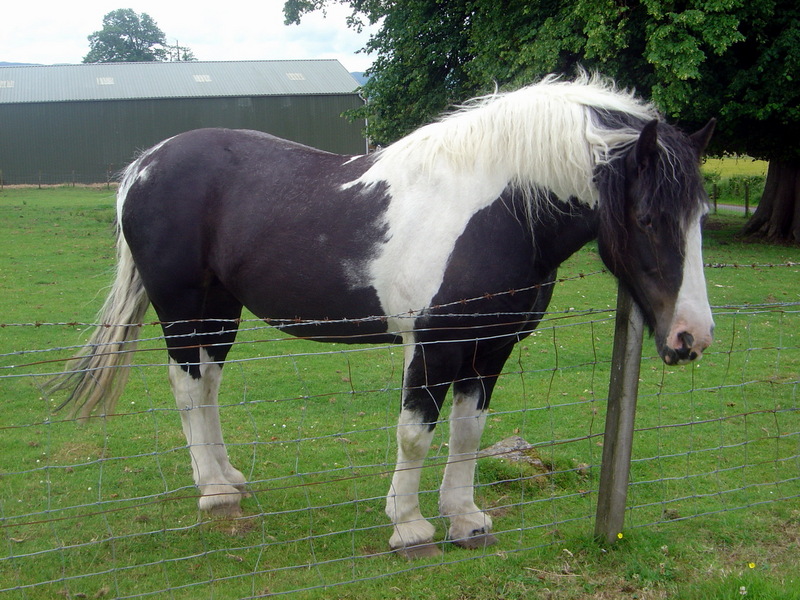|
| 질의: black snake | 결과: 155번째/314 | |
Piebald - Wiki

| 해상도: 1296x972
파일크기: 573861 Bytes
촬영일: 2005:07:13 09:45:33
사진기: DSC-P92 (SONY)
F number: f/2.8
Exposure: 10/1000 sec
Focal Length: 103/10
등록시간: 2007:09:14 23:38:12
|
Piebald
From Wikipedia, the free encyclopedia
[Photo] A piebald horse. Gypsy Vanner horse (in Scotland). Date: 13 July 2005. Copyright ?? 2005 David Monniaux (http://commons.wikimedia.org/wiki/User:David.Monniaux)
A piebald is an animal, especially a horse, that has a spotting pattern of large white and black patches. The colour of the horse's skin underneath its coat may vary between black (under the black patches of hair) and pink (under the white patches). The colouring is generally asymmetrical. Many animals also exhibit colouration of the irises of the eye that match the surrounding skin.
In the UK, it is typically considered a manifestation of the Tobiano gene, though in the United States the color scheme appears in both Overo and Tobiano individuals. The underlying genetic cause is a condition known as leucism.
Similar to the terms skewbald (chestnut or brown and white) and oddbald (bay and white), piebald is no longer in common use in the UK and all three spotted colours are more now usually referred to as Coloured. The term is still in common parlance in Ireland where piebald horses are popular amongst Irish Travellers. In the United States, the term for all large spotted colouring is pinto, with the specialized term "paint" referring specifically to a breed of horse with American Quarter Horse or Thoroughbred bloodlines in addition to being spotted, whereas pinto refers to a spotted horse of any breed. Americans usually describe the colour shade of a pinto literally: black and white, brown and white, or bay and white.
Dogs, cats, pigs, dairy cattle and many other animal species may also be piebald. Snakes, especially Ball Pythons, may also exhibit seemingly varying patches of completely pigmentless scales along with patches of pigmented scales. The term was used in The Conservationist by Nadine Gordimer when referring to kingfishers.
http://en.wikipedia.org/wiki/Piebald
| The text in this page is based on the copyrighted Wikipedia article shown in above URL. It is used under the GNU Free Documentation License. You may redistribute it, verbatim or modified, providing that you comply with the terms of the GFDL. |
|
^o^
동물그림창고 똑똑전화 누리집
^o^
|
|

